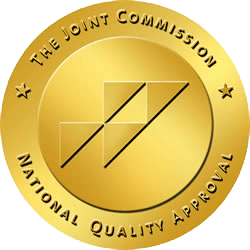Information from the National Alliance on Mental Illness indicates that approximately one in five people in the United States—approximately 43.8 million people—experiences mental illness in a given year. Additional statistics demonstrate that substance abuse is on the rise, with 23.5 million Americans addicted to alcohol and drugs. These statistics are certainly alarming. But what happens when these two realities belong to the same person? When someone suffers from both a mental illness and a substance addiction at the same time, they may have a dual diagnosis.
What is Dual Diagnosis?
Historically, addiction and mental illness were treated separately and independently from one another. However, research reveals that this traditional approach is not as beneficial for people with multiple disorders as it is for people with a single disorder. In fact, the diminished results indicate the separate systems of care are often contradictory and may even produce complications for those dealing with more than one disorder. This is where dual diagnosis comes in. Dual diagnosis refers to the practice of treating people who suffer from both an addiction and a psychiatric disorder. The concept first emerged around 25 years ago and has been proving itself to be incredibly effective. With previous methodologies, disorders were separated, sometimes leaving one set of symptoms ignored, undertreated or untreated altogether. But with dual diagnosis, individuals with co-occurring disorders can now receive integrated treatment that addresses all of their symptoms in a unified way.
How is it Diagnosed?
Dual diagnosis covers a wide range of psychological illnesses and addictions. To receive a dual diagnosis, an individual must exhibit symptoms of both a recognized mental disorder and have an alcohol or drug abuse problem. The chronology of symptoms—or which came first—is not necessarily relevant in arriving at a dual diagnosis; it only requires that both aspects be present. In some people, the mental illness occurs first. This can lead them to use alcohol or drugs as they attempt to cope with the unpleasant and often debilitating symptoms of the mental illness. In other situations, the substance abuse occurs first. As the addiction worsens over time, the symptoms of abuse may lead to emotional and mental problems, which trigger or intensify a mental illness. The importance of dual diagnosis lies in the necessity of treating both conditions at the same time. To effectively deal with co-occurring issues, a person needs treatment to stop using alcohol or drugs, while also receiving therapy, medicine and other help to address their mental illness.
How Common is Dual Diagnosis?
Co-occurring mental health conditions and substance use disorders affect nearly 7.9 million Americans each year. Understood from a different perspective, around 65.5 percent of people with a substance dependence disorder had at least one mental disorder. Conversely, 51 percent of people with a mental disorder had at least one substance abuse disorder. The Substance Abuse and Mental Health Services Administration (SAMHSA) provides detailed information related to dual diagnosis, including causes, effects and treatment options.(2) Statistics from published studies include:
- 16 percent of patients in drug rehab seeking help for addiction issues were also diagnosed with a co-occurring mental health disorder.
- An estimated 2.4 percent among fulltime-employed workers were diagnosed with both a mental health issue and a drug abuse problem.
- Men are diagnosed with co-occurring disorders more often than women, but between 1995 and 2001, the proportion of women admitted into dual diagnosis treatment programs increased from 28 percent to 44 percent.
- 45 percent of dual diagnosis patients primarily abuse alcohol.
- About 21 percent of dual diagnosis patients are addicted to prescription opiates.
These statistics, and many others which analyze a host of complex contributing factors, indicate that dual diagnosis, or co-occurring disorders, occurs more frequently than was originally understood. To learn more about dual diagnosis and how we can help, give us a call at 877-466-0620.


